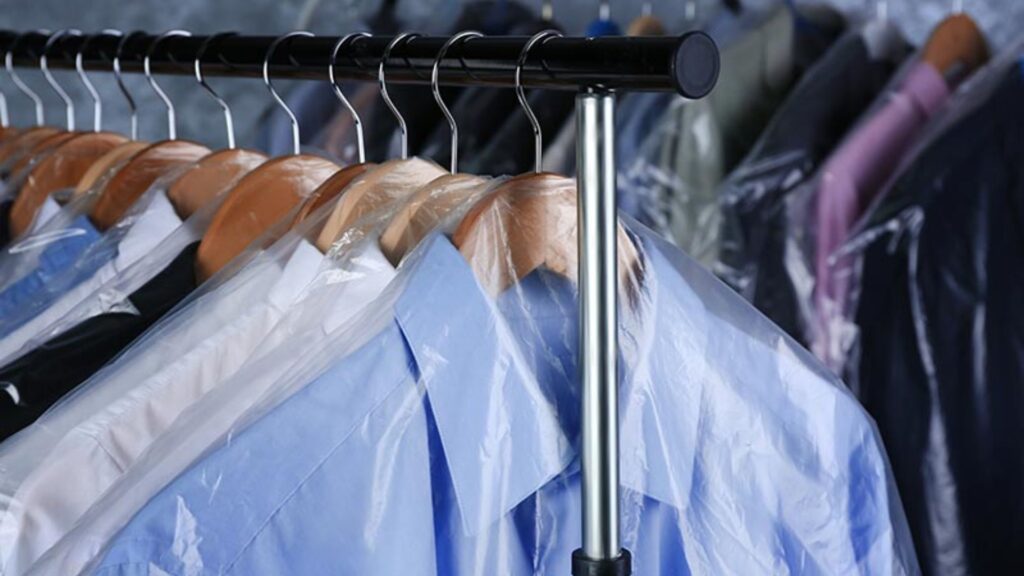How To Properly Wash Clothes In Washing Machine?

Many of us still adore the traditional top-loading models even though many people have shifted to front-loading ones, which can reduce water, electricity, and soap use. Do you know how to properly load your top-loading washing machine after you’ve collected all the wayward socks, wash clothes, and guest towels that someone dared to use, organized them all by colour, and brought them there? Well let’s Start Washing: Step 1 : Prepare and Sort Your Laundry. Sort your materials according to the suggested water temperature, cycle setting, and colors to get the most out of each wash cycle. Clear your pockets of any buttons, loose change, or other anything that might fall out during the cycle. Follow the manufacturer’s directions for pre-treating stains if they are difficult to remove. Try to properly distribute the laundry materials around the central agitator as you fill it, keeping everything as balanced as you can. Place your laundry around the edges of the agitator plate rather than in the center if your top-loading washer lacks a central agitator. The garments will distribute themselves for cleaning as the machine fills with water and the agitator begins to work. Step 2: Fill the Top Load Washer with Detergent After sorting and preparing your laundry for washing, fill your machine with a calculated amount of detergent (or a single-dose detergent tablet). Always follow the directions provided by the detergent manufacturer to determine the correct measurement for your load size. Detergent placement in a top-load washer depends on its model; it is typically added to a dispenser compartment or the washer basket, depending on the model. Step 3: The Settings and Cycle for the Washer Close the lid and choose your wash cycle settings after you’ve added all of your laundry, detergents, and fabric treatments. Before choosing your washer settings, always refer to the care directions on your item to prevent fabric damage. Regular – For mixed loads and cottons, pajamas, hoodies, and t-shirts Hand wash textiles, lingerie, and machine-wash silks and wool for delicate settings Bulky items: things include blankets, jackets, drapes that may be machine washed, rugs without rubber backing, sheets, and sleeping bags. Dishcloths, terry cloths, and towels are examples of towels settings Major Mistake To Avoid Not overloading the equipment is the most crucial thing to keep in mind. Inside the machine, clothes should be arranged equally and loosely. Three duvet covers stuffed into your washing won’t likely get very clean because there isn’t enough room for them to agitate, or get the dirt off. Additionally, a crowded washtub increases the chance that zippers and buttons will rub up against other clothing, potentially resulting in tears and holes. Here is a Small Tip Many of us still adore the traditional top-loading models even though many people have shifted to front-loading ones, which can reduce water, electricity, and soap use. If you are not confident or having less time, just get the online dry cleaning service from professionals. Surely that would help you in case you are not interested in all these.
Spotless Solutions: Finding the Right Dry Cleaner Shop

When it comes to maintaining your wardrobe, a reliable dry cleaner shop near you is an invaluable resource. In this blog, we’ll explore the spotless solutions to consider when searching for a dry cleaner shop in your vicinity, ensuring your clothes receive the care they deserve. Convenience at Your Doorstep: The primary advantage of choosing a dry cleaner shop near you is convenience. No more long commutes or unnecessary travel. A local dry cleaner makes it easy to drop off and pick up your garments, saving you both time and effort. Reputation and Reviews: Start your search by researching the reputation of local dry cleaner shops. Read online reviews, ask for recommendations from friends or family, or even visit the shop in person to get a sense of their professionalism and customer service. Quality of Service: Quality is paramount when it comes to dry cleaning. Look for a shop known for its meticulous attention to detail, including thorough stain removal, careful handling of delicate fabrics, and precise pressing or ironing. Services Offered: Consider your dry cleaning needs. Some shops specialize in certain items like formalwear or bridal gowns, while others offer a broader range of services. Choose a shop that aligns with your specific requirements. Accessibility and Hours: Evaluate the location and operating hours of the dry cleaner shop. Ensure it’s easily accessible for drop-off and pickup, and that their hours fit your schedule. Pricing and Transparency: While cost is a factor, it should be balanced with the quality of service. Look for a dry cleaner shop with transparent pricing, so you know what to expect without hidden fees. Compare prices while considering the overall value provided. Eco-Friendly Practices: Many dry cleaner shops are adopting eco-friendly practices. If sustainability is important to you, inquire about their use of eco-friendly solvents, energy-efficient machines, and environmentally conscious packaging. Communication and Customer Service: Effective communication and excellent customer service are vital. A reliable dry cleaner shop should keep you informed about the status of your items and address any concerns or inquiries promptly. Specialty Items: If you have specialty garments or items like leather, suede, or heirloom textiles, check if the dry cleaner shop has experience and expertise in handling these materials. Conclusion Finding the right dry cleaner shop near me involves considering factors like convenience, reputation, quality of service, and environmental responsibility. By conducting thorough research and selecting a shop that aligns with your needs and values, you can ensure that your clothes receive top-notch care and that your dry cleaning experience is both convenient and satisfying.
5 Reasons for Opting Dry Cleaning Services for Cotton Garments

During humid sessions, cotton garments are mostly preferred by most of us. Cotton garments are durable, soft on the skin, easy to carry, and most comfortable for daily wear. And, if you are one of those who consider regular machine or hand washing safe for cotton garments, it’s time to know something new. Today, we would elaborate on why cotton clothes require dry cleaning. Beforehand, if you have piled your cotton dresses for regular washing at home, please switch to professional and online dry cleaning services to ensure proper care of cotton wearables. Why Dry Cleaning is Necessary for Cotton Clothes! You might not be aware of the fact that hand and/or machine washing dulls your favorite vintage cotton clothes. Cotton fabric is breathable and delicate. Thus, tough cleaning forces cotton fabric to shrink and wrinkle easily. So, it is better to choose a dry cleaning service as a better and safer alternative. So, without further ado, let us know why your favorite, occasion, and formal cotton clothes need to be dry-cleaned only. To Extend Life: Dry cleaning saves delicate and soft cotton clothes from the wear and tear that general cleaning usually imposes on cotton fabrics. Dry cleaning preserves the life of your special cotton dresses as it uses mild chemical solvents instead of harsh water and detergent. Prevent Shrinkage & Wrinkles: Cotton fabric is prone to get wrinkled and shrink easily when it is wet cleaned. Whereas, a dry cleaning service prevents cotton clothes from shrinkage and wrinkles. It retains the shape of cotton clothes after washing and improves the longevity of your adored garment that soap or hand washing cannot. Saves Color: Dry cleaning is a color-protecting option. It does the same for old or new cotton clothes. It uses mild chemical solvents which are lighter than laundry detergent and water. During, the dry cleaning process, it goes through the cotton fabric and prevents the possibility of colorfastness. Clothes Remain A fresh: Dry cleaning is a thorough but mild washing method. It keeps your white, red, blue, yellow, green, and every color of the cotton dress you wear bright and retains its freshness just like new ones. It does not change the fabric of your cotton garment and keeps them as soft as you have bought. Protects from Insect Damage: Often we find moths and other fabric insects keep breeding on our washed cotton garment. If you have experienced the same then next time please go for dry cleaning instead of regular cleaning. Dry cleaning does not let sweat or food stain on clothes that insects use to feed and breed. Dry cleaning removes the toughest food and oil stains from cotton clothes easily and rescues your favorite cotton dresses from intruders. How Often Dry Cleaning Should be Opted for? It closely depends on your usage. For your daily office wear, you can consider online dry cleaning services once or twice a week. Your upper cotton wearable tends to absorb more sweat due to the direct contact of the skin. So, these clothes require frequent dry cleaning. For your occasional and special cotton attires, you can consider dry cleaning after two or three times use. Lastly, It can be said, if you choose dry cleaning for your cotton garment, you get your clothes washed, cleaned, ironed, and folded at the same time every time you hire a professional dry cleaner near your area.
Ways To Restore Back Your Yellow Pit Stains

Though a great white T-shirt is an easy wardrobe staple, keeping it looking fresh over time can be difficult. But with a little know-how and the right cleaning supplies, you can bring even the dirtiest shirts back to life. On white/light shirts, white tees might appear yellow Pit stains. They appear as crunchy zones in the underarm area or as veiled territories on darker materials on occasion. What Are the Causes of Armpit Stains? Understanding how stains originate allows you to completely avoid sweat stains. Here are some of the most common causes of those pesky sweat stains. Sweat is odourless and colourless on its own. Underarm apocrine sweat glands generate a distinct sort of perspiration than eccrine sweat glands. Apocrine sweat, unlike eccrine sweat, contains lipids and proteins, which contribute to stains and odor. Pit stains form when sweat proteins react with aluminum and other substances in antiperspirant. How to Prevent Pit Stains? A good offence is the best defense. Here are several methods for preventing pit stains from forming. Protect yourself by wearing a sweat-proof undershirt. A sweat proof undershirt is the simplest and most convenient solution to prevent pit stains from spoiling your garments. Alter your antiperspirant or deodorant regimen. You might be applying antiperspirant improperly or utilizing the wrong product for your requirements. Take good care of your clothes. You may prevent the occurrence of pit stains or make them much simpler to remove by following correct laundry technique. Trim the hair in your armpits. Armpit hair can be cut to prevent moisture and perspiration from gathering and producing stains. Think about natural therapies. Sweat-reducing supplements include vitamins B, C, and E, witch hazel, sage, brewer’s yeast, eucalyptus, lecithin, and chamomile. Make use of natural deodorant. Using aluminum-free deodorant (rather than antiperspirant) eliminates the source of yellow streaks. Eat things that make you sweat. Spicy meals can fool your nervous system into thinking you’re hot, causing your sweat glands to overwork. Keeping your white T-shirts safe Don’t leave soiled white shirts in the washing basket for too long; the longer you wait, the more probable stains may form and be tough to remove. Separate your lights and darks before dumping them in the washing machine—darker items might release colours during washing that can transfer to your whites. Before choosing a wash cycle, always read the care label on your garment and consider its material and fit. With white tees, a warm wash strikes the right balance between getting the job done and risking shrinking the garments. Lastly, Use a powdered oxygen bleach to brighten white shirts. For a more targeted approach, you can get the dry-cleaning service from professionals. Book for online dry-cleaning services and you can get back your white tee restored properly. It is the best short cut that you are having to remove the yellow stain from white tees. In the case you treat it at home, allow sun drying or air drying which is best option. If you wish to dry your shirt in dryer after washing it, be sure the stain is entirely removed; otherwise, the intense heat of dryer tends to solidify any stains, making them difficult to remove.

